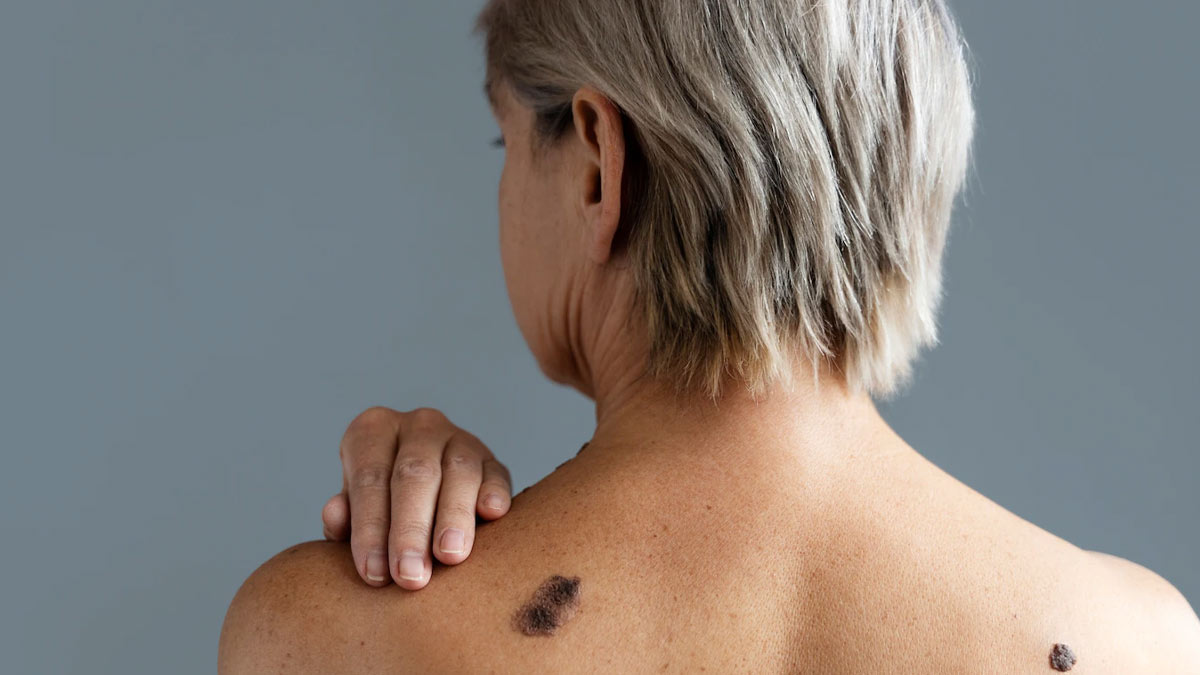
Skin cancer occurs when your skin cells grow and multiply in an uncontrolled manner. It is often caused when there is overexposure to the sun, however, it can occur on areas of your skin which are not exposed to sunlight too. Read this article to learn about skin cancer and its causes, types, and preventative measures.
Table of Content:-
Skin Cancer & Its Cause

There is a formation of new cells when cells grow old and die or become damaged. But when this process does not take place, there is an abnormal growth of skin cells in the body. As a result, it may cause cancer and spread to the nearby tissues or areas of the body if left untreated. It may appear as a rash, irregular patch, nodule or rash on the skin's surface. The visible skin mass may change in size or shape as the cancer grows, and cancer may spread to deeper skin layers.
Types Of Skin Cancer
Skin cancer can be of three types:
- Basal Cell Carcinoma skin cancer
- Melanoma skin cancer
- Squamous cell carcinoma skin cancer
Also Read: Mole Or Melanoma: How To Tell If It Is Just a Mole Or An Underlying Skin Cancer
Basal Cell Carcinoma
Basal cell carcinoma cancer begins in the basal and mainly occurs in the areas that are exposed to sunlight, such as the face and neck. They may appear as a pearly or waxy bump, brown scar-like lesions, or bleeding or scabbing sores.
Melanoma
Melanoma is the most dangerous type of skin cancer and can spread to organs beyond the skin if left untreated. It can develop anywhere on your body, like your legs, hands, and face. It is mostly caused by overexposure to UV rays but can also occur in areas that receive less sunlight.
Squamous Cell Carcinoma
Squamous cell carcinoma is usually found on the neck, head, or arms or on genital areas, lungs and mucous membranes, scars or skin sores. This type of cancer affects the cells on the epidermis' outermost layer. It may appear as a persistent, scaly red patch with irregular bodies that easily bleed or an open sore that persists for many weeks. It can also cause a wart-like growth and raised growth with a rough surface.
Symptoms Of Skin Cancer

All skin cancer is different, and their initial symptoms may be difficult to detect. However, there can be some warning signs that you should not ignore. Some of them are:
- Your skin can develop a new mole, sore, bump, scaly patch, or dark spot.
- Your mole or spot has an irregular shape with two parts that are not similar.
- Skin lesions may have ragged or uneven edges and can be of unusual colour or have more than one colour within a lesion.
- Your mole may evolve and change in a certain way. There may be a change in size, colour, and shape which may cause bleeding, itching, and pain.
Also Read: Warning Signs Of Skin Cancer You Should Know About

Prevention
- You can reduce the chances of developing skin cancer by some of these measures:
- Limit exposure to harmful UV rays, especially when the radiation is too strong.
- Use sunscreen and lip balm with a sun protection factor(SPF) of 30 or higher. Apply the sunscreen 30 minutes before visiting outdoors.
- Wear a hat that protects your face, head, and ears and sunglasses that block UV rays.
- Avoid sunlamps and tanning beds.
Treatment
Skin cancer treatment depends upon its size, type, location, and stage. There can be cryosurgery, mohs surgery, excisional surgery, chemotherapy, photodynamic therapy, radiation, etc.
Takeaway
You can prevent skin cancer by reducing exposure to harmful ultraviolet rays or by checking any changes on your skin that are not normal. Detecting cancer early can help you in faster recovery. If you notice abnormal or uncommon skin changes, consult your doctor immediately.
Also watch this video
How we keep this article up to date:
We work with experts and keep a close eye on the latest in health and wellness. Whenever there is a new research or helpful information, we update our articles with accurate and useful advice.
Current Version